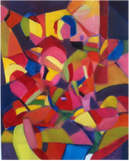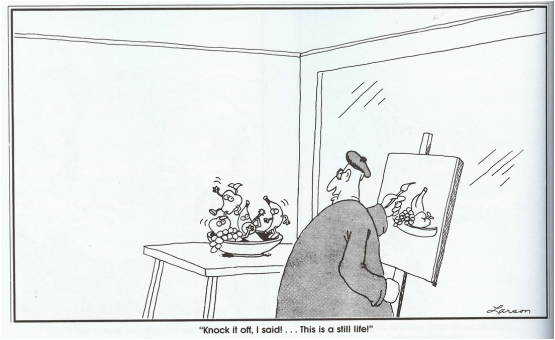
“The fact that for a long time Cubism has not been understood and that even today there are people who cannot see anything in it means nothing. I do not read English, an English book is a blank book to me. This does not mean that the English language does not exist. Why should I blame anyone but myself if I cannot understand what I know nothing about?" -Pablo Picasso.
It is easier and faster to look at a painting that looks like the subject matter. It is harder to appreciate a painting where the abstract qualities themselves are the subject matter. I would like to investigate that further.
Close observation implies rendering onto the paper what the painter sees in nature, whether this is human figure, still life or landscape. The nature of the subject matter, and thereby the genre of painting, influences the way the painter observes it and renders it. Painting from observation requires grasping abstract qualities from the subject matter, as a fundamental principle. Looking at a human figure in an abstract way may be particularly challenging, due to the nature of the subject matter and our physiologic empathy with it. Some theories suggest that the human brain has been positively reinforced during evolution to recognize a face instantly for what it is. From the other side of the mirror, some visual tracking studies have shown that the viewer preferentially looks at the eyes, then the mouth then the rest of the face and its surroundings when looking at a figure painting. Compared with figure models, still lives and landscape subject matters are less stereotypical. Therefore the viewer looks at them from a more global and a specific perspective, and may concentrate on the abstract qualities themselves more easily.
I think that the same is valid from the painter’s point of view: it is more challenging for a painter to free him/herself from object identity and focus on abstract qualities when painting a human figure versus a still life or a landscape. It requires a different effort, led by a willingness to go beyond realism, and that should be teachable by experience.
It is easier and faster to look at a painting that looks like the subject matter. It is harder to appreciate a painting where the abstract qualities themselves are the subject matter. I would like to investigate that further.
Close observation implies rendering onto the paper what the painter sees in nature, whether this is human figure, still life or landscape. The nature of the subject matter, and thereby the genre of painting, influences the way the painter observes it and renders it. Painting from observation requires grasping abstract qualities from the subject matter, as a fundamental principle. Looking at a human figure in an abstract way may be particularly challenging, due to the nature of the subject matter and our physiologic empathy with it. Some theories suggest that the human brain has been positively reinforced during evolution to recognize a face instantly for what it is. From the other side of the mirror, some visual tracking studies have shown that the viewer preferentially looks at the eyes, then the mouth then the rest of the face and its surroundings when looking at a figure painting. Compared with figure models, still lives and landscape subject matters are less stereotypical. Therefore the viewer looks at them from a more global and a specific perspective, and may concentrate on the abstract qualities themselves more easily.
I think that the same is valid from the painter’s point of view: it is more challenging for a painter to free him/herself from object identity and focus on abstract qualities when painting a human figure versus a still life or a landscape. It requires a different effort, led by a willingness to go beyond realism, and that should be teachable by experience.

 RSS Feed
RSS Feed